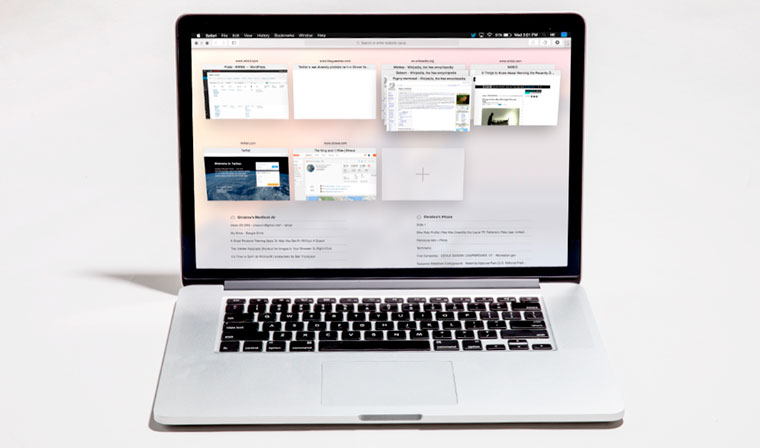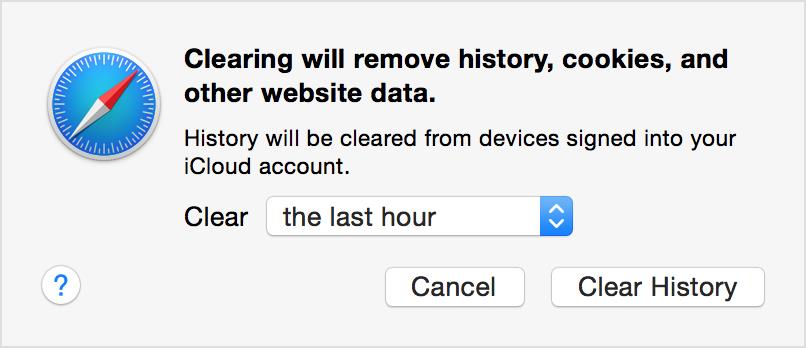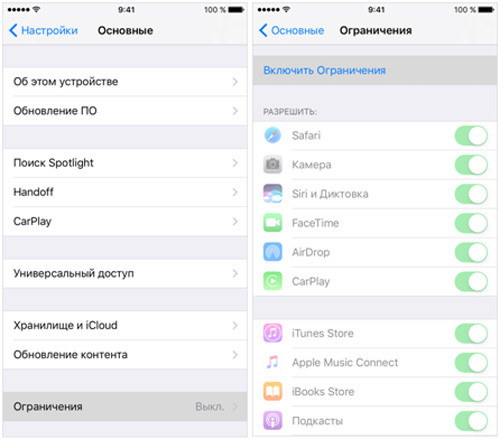Safari can't connect to the internet. Safari web content "not responding"? How to fix browser freezing problem on Mac. Why Safari can't open the page
Safari is a web browser that was developed by Apple. This program is very popular among users of Apple products, because it combines style and extensive functionality.
Also, until 2012, Safari was also distributed for Windows OS, but after that the company decided to stop support, but even that version is still capable of a lot and occupies its market share among browsers.
The system has an older version of the plugin and does not meet the website requirements
However, it is recommended that you use the latest version so that you can access sites with the latest features and benefit from the latest product enhancements.
You haven't installed the plugin
- If this file exists, the plugin is installed.
- To find the version, click on the file.
- Select "Information" from the File menu.
In the first versions, the appearance of the program differs from the design we are used to. Over a long period of updates and improvements, the following components have been changed:
- Keys;
- Scroll bar;
- Entry field;
- Drop-down menu;
- Checkboxes;
- And the most important thing has been updated - the very system of how the browser works with a computer.
Safari 5.0 saw the addition of a reading bar, changed search settings, improved the saving system, and added an additional toolbar for developers. Further, these functions have only been improved and are now a convenient device for any user.
After rebooting, please visit the website that is generating the error message.
- If it's enabled, uncheck the box.
- Close the window.
Basic Safari Features
The most basic browser properties:
- There are built-in search tools such as Yandex, Google and Bing.
- You can block pop-up windows.
- Built-in text search function.
- There is auto-filling of forms and scaling of the text input area.
- Various encryption and hiding protocols are supported.
Among the additional functions, it is worth noting the presence of a reading mode, full-screen mode, functions in which the browsing history is not visible (private mode), hiding history and a reading list. It may also allow you to view a list of your most frequently visited sites.
Why Safari can't open the page
There are several reasons why Safari cannot open the page:

Actions when it is impossible to open in Safari
When the page does not open, wait a couple of minutes and try again. This is if you are shown that “the website is temporarily unavailable.” This is announced by the fact that the resource administrators are carrying out technical work on the site and have temporarily limited access to it. If this does not solve the problem, try clearing your saved data and resetting your Safari settings.
Checking Parental Controls
You can suggest ways to solve the problem or include information needed to solve it. If you copied and pasted the address, make sure it doesn't have any extra characters or missing characters at the beginning or end. It is possible that the website server is busy or that the website is temporarily unavailable. If you are connecting to the Internet using a corporate or corporate network, it is possible that the network has a firewall and is preventing you from opening the web page. If your computer or network is behind a firewall, you may need to specify proxy servers to access some Internet sites. The page is likely blocked by a content blocker you have set. To check if the problem still occurs even without content being locked, press and hold the Restart button without content being locked. Some videos, images, or other elements don't appear on the web page, but other page elements load.
- Make sure you are using the correct address on the website.
- You cannot log into a secure website.
- The web page loads or redirects multiple times.
In order to do this you will need the following steps:

We also recommend checking your Internet connection. To do this, open any other program. If the Internet is connected or accessed through a corporate or enterprise network, there may be some problems. Contact your administrator for help solving this problem.
For example, embedded videos may not appear if they are hosted on a site other than the one you are viewing. Ask the administrator if you can access the site you are trying to see. You can temporarily disable extensions and reload the page to see if this is the problem. Repeat this step with all installed extensions. . If the page loads correctly, it means that one or more extensions have prevented the content from loading. Re-enable the extension and then load the page again to check which extensions are blocking the content you want to view.
You should also check the address of this page. Once again, make sure that the address is correct and that it is entered correctly. If everything is correct, then try entering index.html at the end of the address.
A not popular, but possible reason is also the presence of an old version, so you should make sure that the browser is updated.
If the website still won't load even if all extensions are disabled, try the steps in this article. If just one website is down, you can delete data associated with that site to see if the problem is resolved. If you want to delete data from all sites and pages you've visited, select "all history" from the Delete pop-up menu. Using these options. If the problem is resolved by disabling the extension, look for updates for extensions by clicking "Updates" in the bottom left corner of the window.
If Safari doesn't work on your iPhone, iPad or Mac, you don't need to immediately look for alternative browsers. You can eliminate any error yourself if you understand what caused it.
Troubleshooting iPhone and iPad
Why might Safari not work on iPhone? Errors can be different: lack of a program icon, inability to access a secure https site, etc. We rarely pay attention to a running program, but when the iPhone 5S or 6 stops accessing the Internet, we want to quickly figure out errors in the browser.
Removing Internet modules and other add-ons
Or remove the extension by clicking the Remove button. You can remove internet modules and other add-ons to see if they are causing the problem. The Library folder is at the top level of your hard drive. . The library folders contain the following folders for add-ins. Move any file from these folders to the Trash.
Time frame for solving the problem
If the issue persists, it means that you have identified the add-in that is causing the issue. Avoid using it or contact the manufacturer for an updated version.
- Open the Trash and select one of the files you deleted.
- The file is returned to its folder.
Problems often arise after a system update. After updating to iOS 9.3, users experienced that pages stopped opening in the browser. In the next update, the developers fixed the cause of the error, but before that, users had to disable JavaScript in the settings, change the search engine and delete applications.
First of all, we need to consider a few things. The most common problems are those that appear slowly, with pages that display incorrectly, become unavailable suddenly, or show a version of them that has not been updated. If this is not the case, we are likely facing a more serious error and we need to start identifying it. If you can't open the site, try these suggestions.
It may contain ways to solve the problem or information needed to resolve it. If you copied and pasted the address, make sure there are no more characters or missing characters at the beginning or end. The site server may be busy or the site may be temporarily unavailable. If you connect to the Internet using a corporate or business network, your network may have a firewall that prevents you from opening the web page. If your computer or your network is behind a firewall, you may need to specify proxy servers to access some Internet sites. The page may be blocked by a set content block. Check the message that appears when the page cannot be opened. . On the right side of the address field, you will find a circular arrow to reload the current page.
If the problem is not related to an error when updating the system, which developers fix after detection by users, then it can be solved by restarting the application or clearing the history of browser data.
- Launch Safari. Click on the book icon.
- Open the "History" tab.
- Click "Clear" on the bottom panel.
- Select a period to delete cookies and website data.
The same operation can be performed through the “Safari” section in the settings.
At the bottom of the screen is a toolbar with five icons: back and forward arrows, a plus sign to add the current page to your favorites list, a book icon to view existing bookmarks and browsing history, and a stacked page icon to open and navigate across multiple pages. Tap one of these items in the list to open that page. When you scroll down one page, the navigation bar disappears from the top of the screen. To quickly enter a new web address, tap the status bar at the top of the screen, bringing back the address bar.

Another common problem is the lack of a Safari icon in the home menu. To get it back, you need to remove the restriction on the application.
- Open settings, go to the “General” section.
- Go to the “Restrictions” subsection. If it is inactive, then there are no restrictions.
- If the subsection is active, go into it and disable the Safari restriction.

If you prefer to search online, tap the search field to the right of the address field. You can scroll up, down, left or right by dragging your finger across the page in the direction you want. Tap and swipe quickly and the page will scroll; tap the screen to stop the movement, or let the screen stop on its own. To zoom in on a specific part of the screen, place two fingers together on it and then separate them in an inverted "pinch" pattern. Do the opposite to reduce.
You can also zoom in on a specific part of a web page by double-clicking in that area; repeat double tap to reduce. This trick works best on pages with column and table layouts. Text is amazingly clear even at the smallest sizes. There will be pages with content that you cannot read. While reading a web page, tap any link to go directly to that page. As with any browser, you can use the forward and back buttons to move between pages.
After disabling the restriction, the icon will appear in the home menu. If the above methods do not help return the built-in browser to a working state, you can install from the App Store and use another browser - for example, Chrome.
If Safari isn't working for you on Mac, there are several ways to resolve the issue. The method you choose depends on the reasons why Safari on Mac is starting to crash. The simplest solution is to restart the application. Close Safari and restart it to get rid of non-critical errors. If the browser stops responding, force quit it. Hold down Command + Option + Escape and click “Finish” in the window that appears.
Basic Safari Features
If you need to enter text in a field on the page, tap it. Some pages have interactive fields for selecting dates and other options. If you encounter list or scrolling on a web page - for example, writing a comment on a blog, you will find that single-finger scrolling is not allowed. Instead, zoom in on the box and use two fingers to scroll through it.
Simply select a recipient, add any comments you want, and click “Send.” To open a new page without closing the current page, tap the pages icon in the bottom right corner of the screen and then tap New Page. When you have more than one page open at the same time, the page icon displays the number of open pages. To switch between open pages, tap the pages icon. You will see a thumbnail preview of each page.

If this does not help, close the browser processes individually:
- Open the Programs – Utilities folder and launch System Monitor.
- In the Memory or CPU tab, look for the Safari processes marked in red.
- Select the processes and end them with the "X" button on the toolbar.

Drag your finger left or right to scroll through open pages. Touching anywhere on the page moves the page forward. To bookmark a web page, tap the plus sign to the left of the address bar. The Add Favorites screen appears. Here, you can edit the page title—to better reflect the content or simplify a long name—and choose where your favorite will be located in your favorite folders. To insert a new bookmark into an existing folder, tap the arrow to the right of the word Favorites, then tap the folder you want in the easy-to-navigate hierarchical list.
The listed methods help bring Safari to life when the browser stops working. If the problem persists, clear your browser's cache and history by opening the Safari menu and selecting Clear History. Select a period and click Clear Log.
